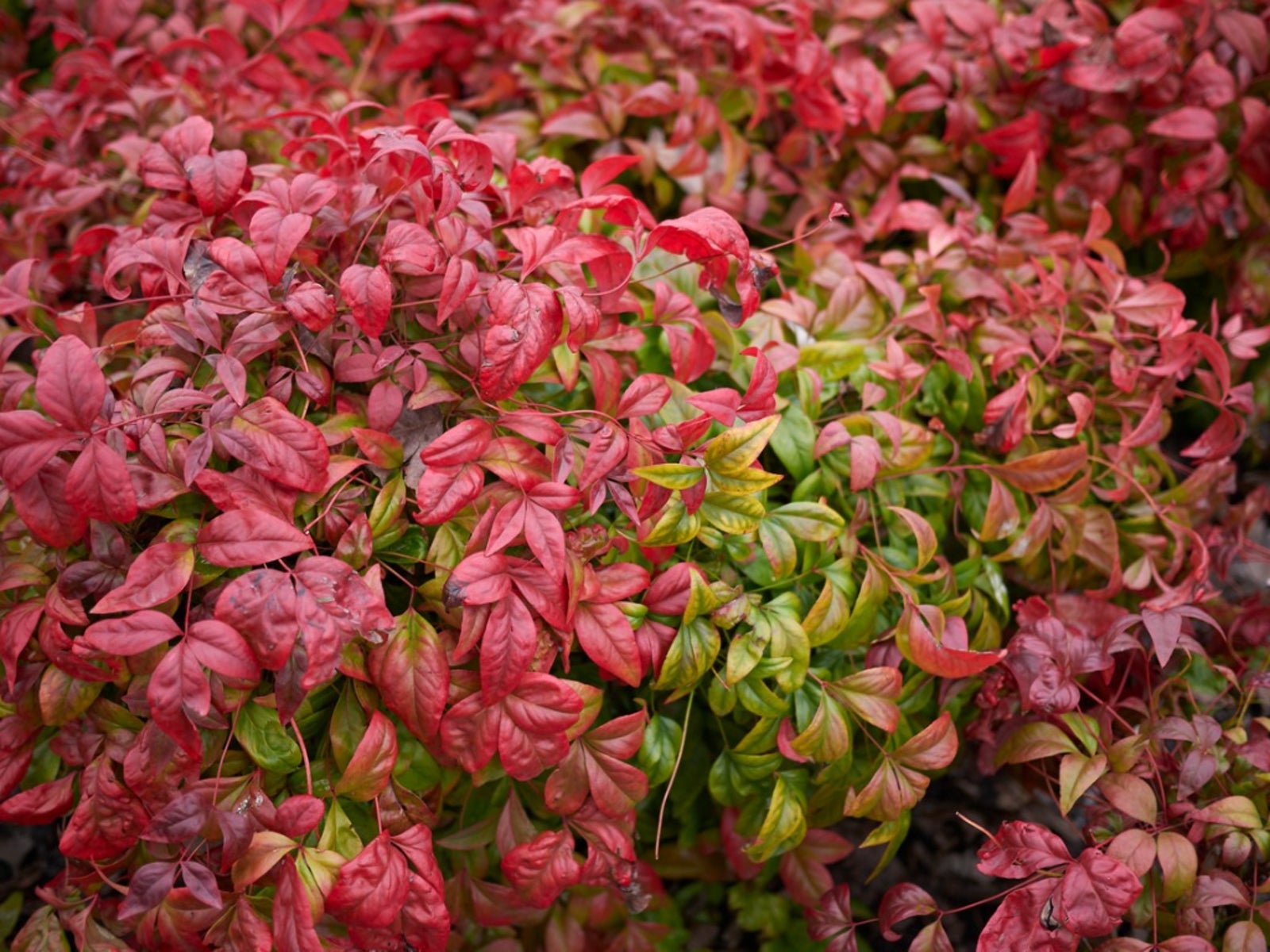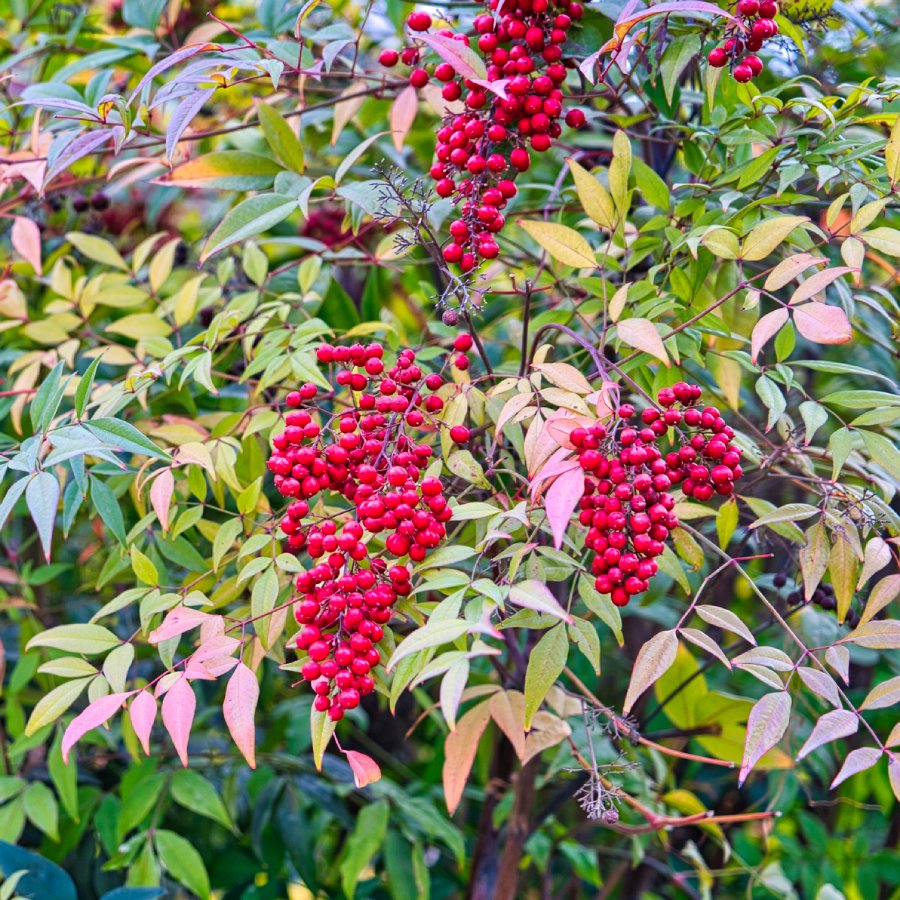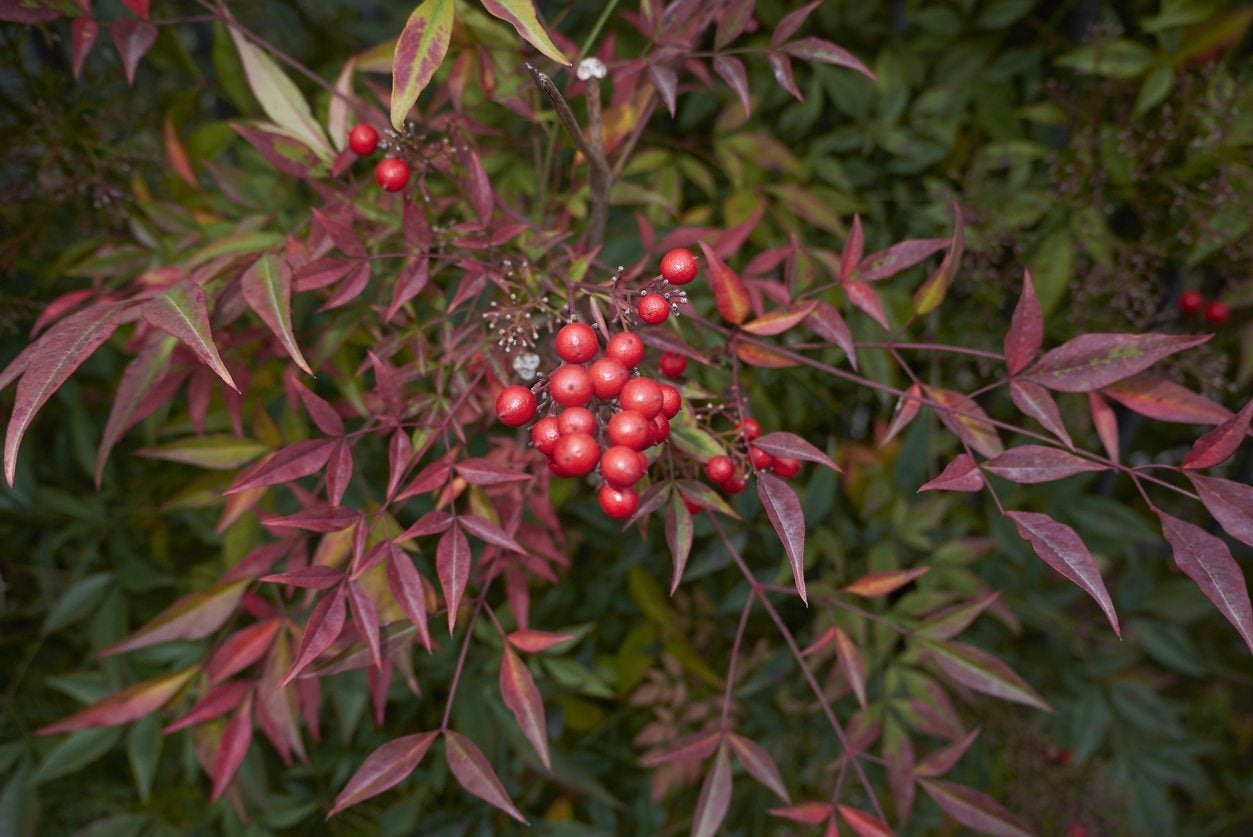Growing Heavenly Bamboo - Tips On Caring For Heavenly Bamboo


Heavenly bamboo plants have many uses in the landscape. The leaves change colors from a delicate green in spring to deep maroon in fall through winter. Growing heavenly bamboo is not complicated. Heavenly bamboo is the common name of this plant; it is not related to plants in the invasive bamboo family. Heavenly bamboo care is simple and straightforward. Once you've learned the basics of caring for heavenly bamboo, you can enjoy this attractive plant in your landscape during all seasons.
About Heavenly Bamboo Plants
If you're thinking of growing heavenly bamboo, choose a location with full sun. Heavenly bamboo plants are attractive as part of a shrub border, in groupings, or even as a standalone focal point. Small, white flowers appear in late spring to summer in USDA garden zones 6 through 9 where it is hardy. Standard heavenly bamboo plants, Nandina domestica, can grow to 8 feet (2 m.) in maturity with a spread as wide. Most vibrant foliage color results from growing in full sun. Shorter cultivars of heavenly bamboo plants, such as Wood's Dwarf and Harbour Dwarf, usually reach about 18 inches (45.5 cm.). These more compact types of heavenly bamboo plants work well as edging plants around large beds. The cultivar Firecracker is a dwarf with brilliant, red fall foliage. Whether short or tall, Nandina plants are prized for their deep maroon color in fall and winter. Clusters of red berries abound and are useful for indoor holiday arrangements. Berries should be removed before the birds get to them, however, as a responsible part of caring for heavenly bamboo. Seeds spread by birds tend to easily sprout among native vegetation, giving heavenly bamboo plants the reputation of being invasive.
Heavenly Bamboo Care
When choosing the location for growing heavenly bamboo, make sure the soil is well-draining. Amend the soil with well-composted materials to improve drainage, if needed. Rich soil is preferable for growing this plant. Remember, a full sun location makes leaf color more vibrant. Feed and water Nandina plants as you care for surrounding specimens. If the leaves of the Nandina plant begin to yellow, treat them with nitrogen-based fertilizer. The multiple stems of this plant are called canes. A fun task when growing heavenly bamboo is the pruning of heavenly bamboo canes. When pruning heavenly bamboo, take the canes to different levels. This will encourage a fuller appearance and keep the shrub from looking skimpy at the bottom. Nandina plants are best allowed to grow in their natural form, however, never sheared or clipped as a formal hedge.
Gardening tips, videos, info and more delivered right to your inbox!
Sign up for the Gardening Know How newsletter today and receive a free copy of our e-book "How to Grow Delicious Tomatoes".

Becca Badgett was a regular contributor to Gardening Know How for ten years. Co-author of the book How to Grow an EMERGENCY Garden, Becca specializes in succulent and cactus gardening.
-
 Looking For Plants To Give You The Soft And Fuzzies? Try These 5 Fuzzy Leaf Plant Options
Looking For Plants To Give You The Soft And Fuzzies? Try These 5 Fuzzy Leaf Plant OptionsLovers of texture, drama, silver foliage and tactile plants will adore these special sensory garden additions. These fuzzy leaf plant options will leave you all aglow
By Susan Albert
-
 Get Ready For A Summer Of Hummers! Grow These Full Sun Hummingbird Plants and Flowers
Get Ready For A Summer Of Hummers! Grow These Full Sun Hummingbird Plants and FlowersIf you’re lucky enough to enjoy a sunny backyard, make sure you are maxing out on your pollinator opportunities and grow these full sun hummingbird plants and flowers
By Tonya Barnett
-
 Toxic Berries To Birds – Do Nandina Berries Kill Birds
Toxic Berries To Birds – Do Nandina Berries Kill BirdsAre nandina berries of heavenly bamboo poisonous? Yes! The berries contain cyanide and can be toxic berries to birds. Learn more here.
By Teo Spengler
-
 Heavenly Bamboo Control – How To Get Rid Of Heavenly Bamboo Bushes
Heavenly Bamboo Control – How To Get Rid Of Heavenly Bamboo BushesMany gardeners want to learn about heavenly bamboo management. Click here for tips on how to get rid of Nandina in the landscape.
By Amy Grant
-
 Native Nandina Alternatives: Heavenly Bamboo Replacement Plants
Native Nandina Alternatives: Heavenly Bamboo Replacement PlantsBy Becca Badgett
-
 Nandina Plant Pruning: Tips For Cutting Back Heavenly Bamboo Shrubs
Nandina Plant Pruning: Tips For Cutting Back Heavenly Bamboo ShrubsNandina plants can get leggy as they grow taller. Pruning heavenly bamboo plants keeps these foundation shrubs dense and bushy. If you want to learn how to prune nandina, we?ll give you the top tips on cutting back heavenly bamboo in this article.
By Teo Spengler